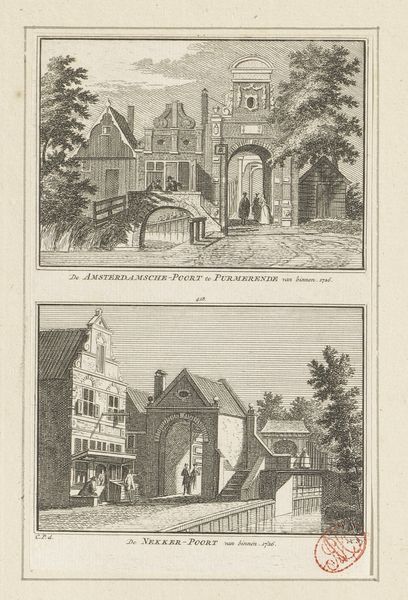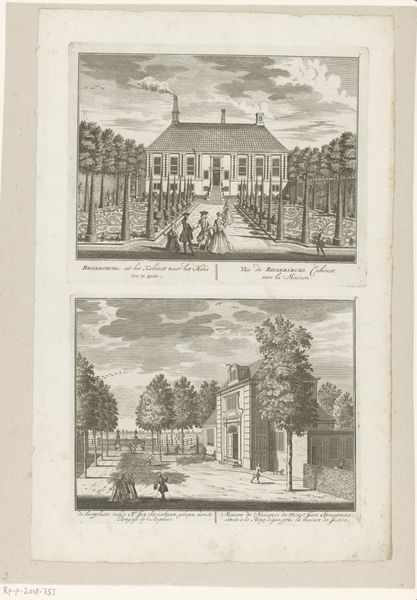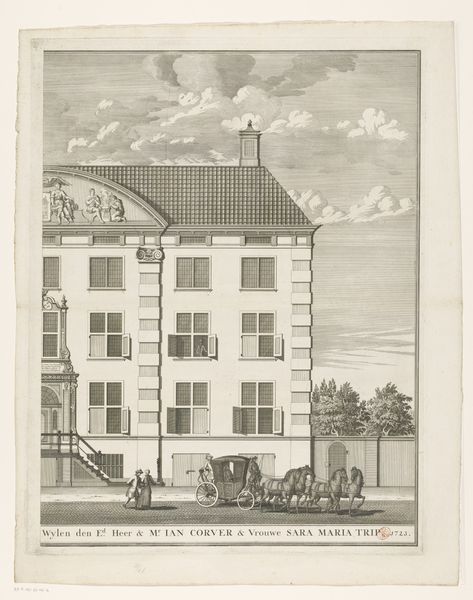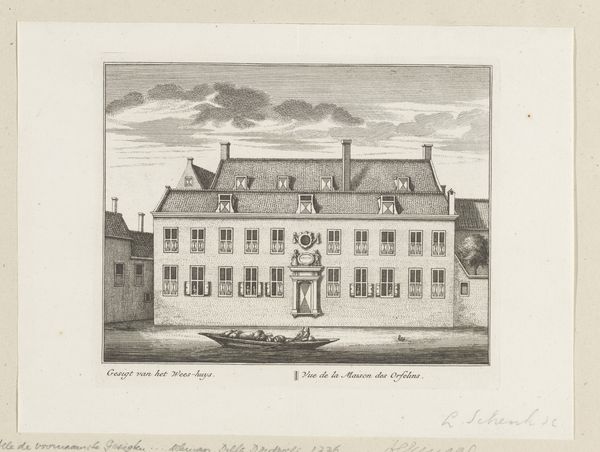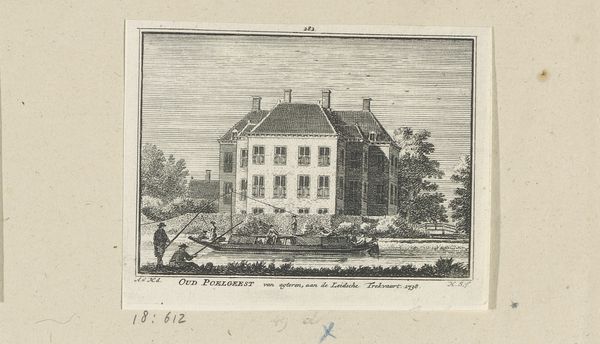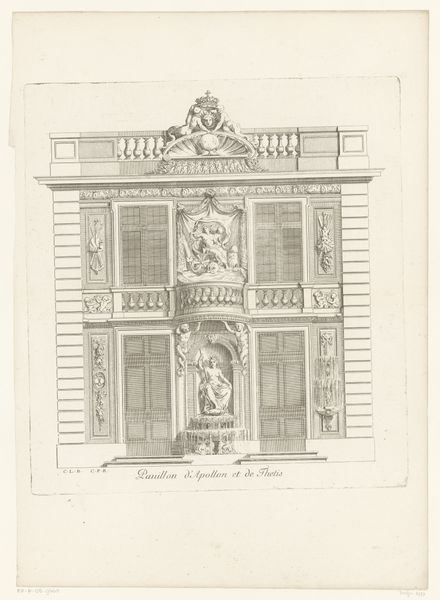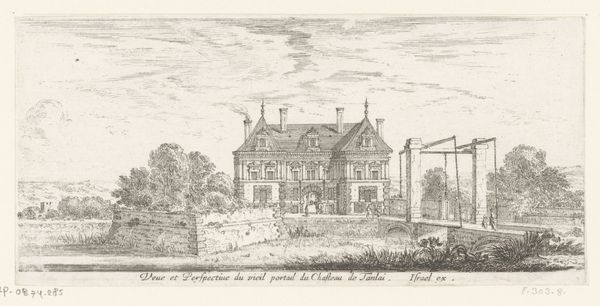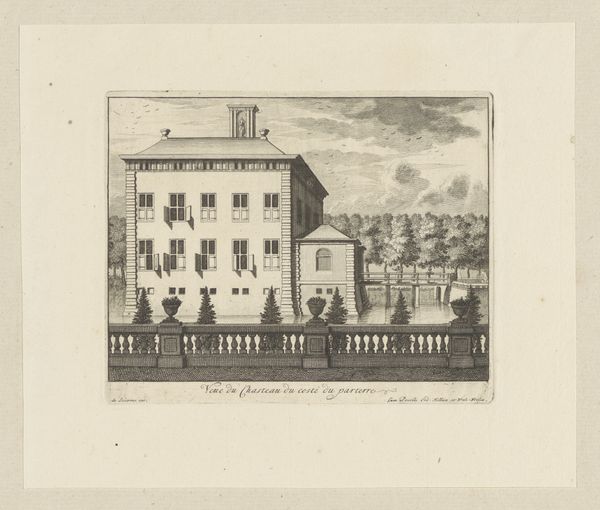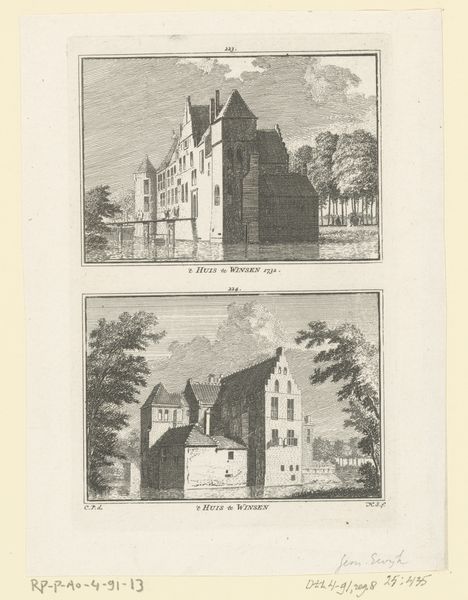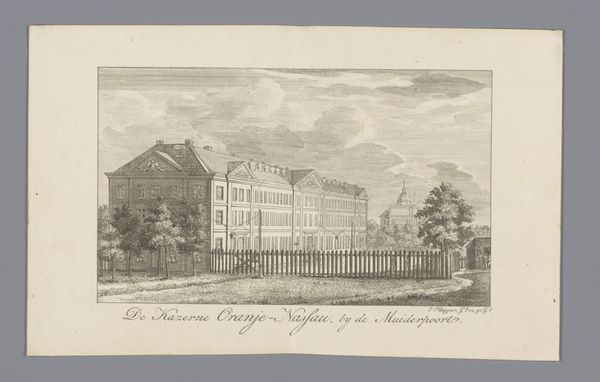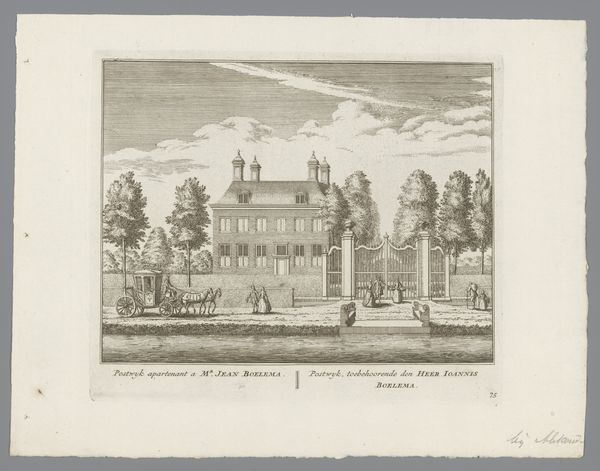
Oude Mannen- en Vrouwenhuis en Nederlands Israëlitisch Ziekenhuis te Amsterdam 1848
0:00
0:00
print, engraving, architecture
# print
#
old engraving style
#
historical photography
#
history-painting
#
engraving
#
architecture
#
realism
Dimensions: height 207 mm, width 150 mm
Copyright: Rijks Museum: Open Domain
Editor: This is "Oude Mannen- en Vrouwenhuis en Nederlands Israëlitisch Ziekenhuis te Amsterdam" by Johannes Hilverdink, created in 1848. It's an engraving, so it’s all about the lines, and it gives me this sense of, well, almost clinical detachment in representing both the synagogue's interior and the hospital's facade. What strikes you about the visual construction of this print? Curator: The composition presents a distinct diptych. Note how the upper section, depicting the synagogue, is predominantly structured by vertical lines leading the eye to the raised platform. Then consider how it contrasts with the building in the lower register, grounded and flattened with horizontal lines across all its levels. What do you read in this visual articulation? Editor: I guess, the interior emphasizes height and a kind of spiritual ascension, whereas the hospital stresses stability and groundedness? Is that a conscious choice, do you think, or simply a result of the subject matter? Curator: Indeed. Notice also how Hilverdink uses light and shadow, a fundamental element of pictorial structure. Look at the way the windows in the synagogue let light stream in, juxtaposed against the fairly flat lighting of the hospital exterior. How does the manipulation of light add to the print’s deeper visual framework? Editor: It's like the light elevates the spiritual aspect, while the consistent light on the hospital suggests a focus on structure and form more than emotion. I'm beginning to see how form really dictates the narrative. Curator: Precisely. And that's the core of its expressive power. Editor: I appreciate your focus on composition! It highlights how deliberate choices of line and lighting guide the viewer’s experience, really affecting how we engage with the content. Curator: I agree. There are many layers of meanings that we extract by carefully reading visual and construction elements of the composition.
Comments
No comments
Be the first to comment and join the conversation on the ultimate creative platform.
